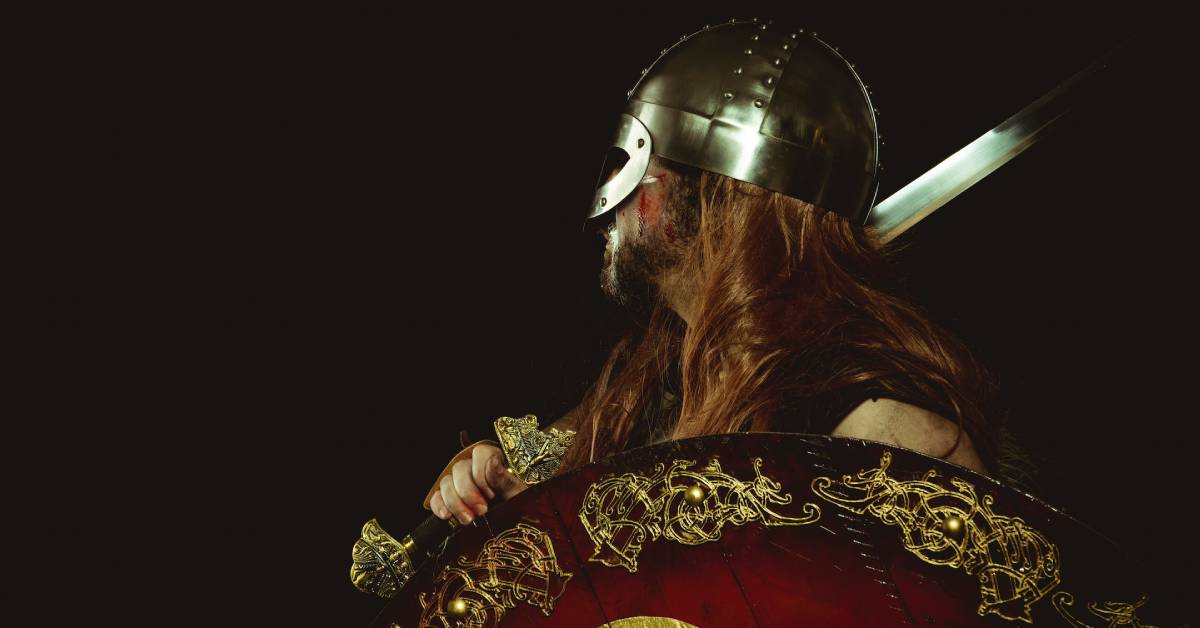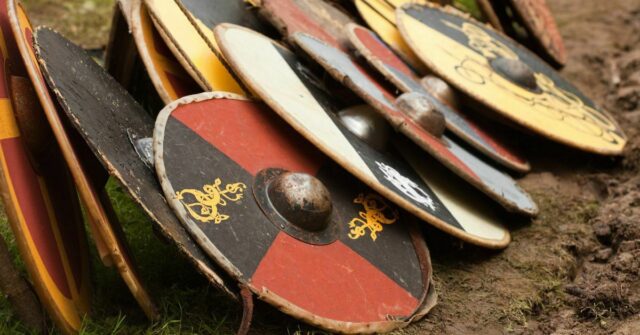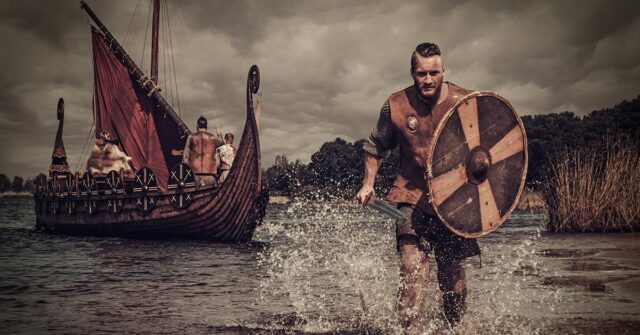The Viking era, a period that lasted from the 8th to the 11th centuries, was marked by seafaring Norse warriors renowned for their fierce battles.
This piece delves into the intricacies of Viking warrior attire, focusing on its historical and societal context, its materials, designs, armory, and how it adapted to various climates and social ranks.
Ultimately, we will examine how these fashion trends and practices have influenced the modern perception of Viking warriors.
The Importance of Viking Attire
From a broader perspective, clothing in any culture reveals a great deal about the era’s societal norms, climate adaptations, status differentiation, and technological advancements.
In the case of Viking warriors, their attire was not only functional, providing protection during their battles, but also a reflection of their identity, beliefs, and social hierarchy. Hence, to understand Vikings’ attire is to understand Vikings themselves better.

Understanding the Viking Age
Before delving into the details of Viking attire, it is crucial to grasp the Viking Age’s broader historical and cultural context.
This understanding provides a foundation for why the Vikings dressed as they did and the functional and symbolic significance of their clothing and armory.
Historical Context
The Viking Age, from the late 8th century to the early 11th century, was marked by significant exploration, trade, and warfare by the Norse people from the Scandinavian region.
This era was characterized by the Vikings’ extensive seafaring exploits, leading them to inhabit and influence various parts of Europe, Asia, and even North America.
Therefore, their clothing and armory were adapted not just to their native Scandinavian climate, but also to the varied climates and terrains they encountered in their travels and conquests.
The Role of Warriors in Viking Society
Warriors were a vital part of Viking society, often belonging to the nobility and serving as the primary force in territorial expansion and defense.
Their attire, therefore, was not only functional but also symbolic, indicating their societal role and status.
Warriors would don attire suitable for both combat and showing their social position, often using high-quality materials, intricate designs, and adorned weaponry.
General Features of Viking Warrior Attire
Viking warrior attire had several defining features that made it suitable for both the demands of warfare and the climates the Vikings encountered.
These elements ranged from the materials used, the construction of the clothing and armor, and the presence of vibrant colors and patterns.
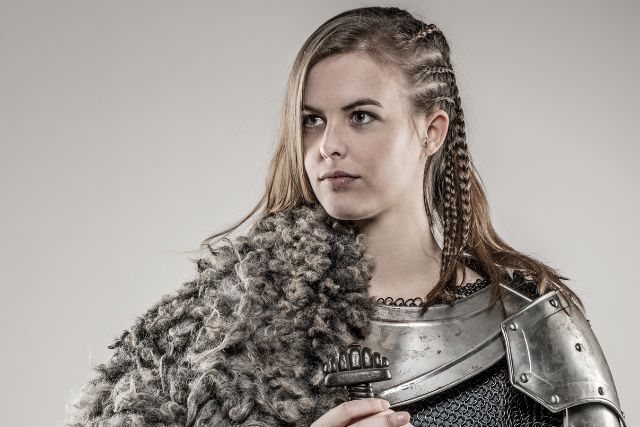
Viking Clothing Materials
Vikings used various materials for their clothing, often sourced from their surroundings. The most common were wool, linen, and animal skins.
Wool was used for many garments due to its availability, durability, and insulation qualities. Linen, obtained from flax plants, was likely used for undergarments because of its lighter weight and breathability.
Animal skins, including those from cows, deer, or seals, were used for making heavier outerwear, boots, and gloves.
Color and Patterns
Contrary to popular belief, Vikings appreciated color and often dyed their clothing using natural materials. Red, blue, green, and brown were prevalent colors.
In addition to color, decorative patterns were often woven into clothing or embroidered onto the fabric. These patterns could be geometric, animal, or even mythological in theme, reflecting the rich Norse mythology.
Viking Warrior Clothing
While Viking warriors were best known for their armor, their clothing was equally essential. It provided basic protection from the elements and, when crafted carefully, offered an additional layer of defense in combat.
The layers typically consisted of undergarments, trousers, tunics, cloaks, and footwear.
Undergarments
Undergarments were likely made from a lighter fabric like linen and included a shirt and some form of under-trouser. These garments provided a comfortable layer between the body and heavier outer clothes.
Trousers and Leg Wraps
Viking trousers were made of wool and designed to be loose-fitting for better movement. Over their trousers, Vikings often wore leg wraps.
These were strips of woolen fabric wrapped around the lower leg from ankle to knee, providing extra warmth, protection, and support to the legs.
Shirts and Tunics
Shirts and tunics were a vital part of a Viking warrior’s clothing. These were typically made of wool, although wealthier Vikings might have tunics made of silk or linen.
These garments were often knee-length for men and were typically worn over an undergarment. They could be dyed in various colors, and those of high-ranking warriors often featured intricate designs or trimmings.
Cloaks and Outerwear
Cloaks were essential for protection against harsh weather conditions. They were often made of heavy wool or animal skins and could be fastened at the shoulder with a brooch or a pin.
In addition to cloaks, fur-lined coats or jackets made from animal skins were worn during particularly cold periods or in colder climates.
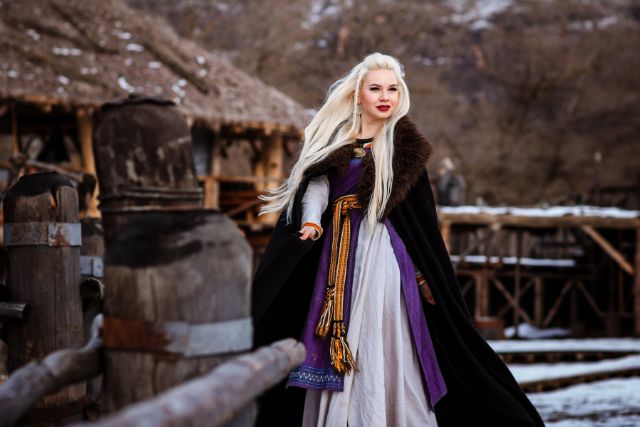
Footwear
Footwear, often made from leather, was an essential part of a Viking’s attire. Shoes and boots were typically constructed using the turn shoe method, where the upper part of the shoe was turned over the sole and stitched together.
The design was simple yet effective, providing crucial protection for the foot.
Viking Warrior Armor
Armor was a crucial part of a Viking warrior’s gear. Despite the common perception, not every Viking wore complex or heavy armor, as it was expensive and not always practical.
The main components of Viking armor were helmets, shields, and body armor, which could include chainmail and leather armor.
The Myth of the Horned Helmet
Contrary to popular belief and many modern depictions, Vikings did not wear horned helmets into battle. This misconception likely originates from 19th-century romanticized artistic representations of Vikings.
In reality, a horned helmet would have been impractical and potentially dangerous in combat.
Helmet
Real Viking helmets were typically made from iron and were designed to be functional rather than decorative.
The most common design was a simple, rounded cap with a guard to protect the nose. Some helmets may have included chainmail neck guards for additional protection.
Shield
The shield was a Viking warrior’s primary form of defense. Made from wood and often reinforced with leather or iron, the round shields were large enough to cover a significant portion of the warrior’s body.
The shields were as much a weapon as a defensive tool, used to push, bludgeon, or deflect enemy blows.
Chainmail and Leather Armor
Chainmail was a type of armor consisting of small metal rings linked together in a pattern to form a mesh. This provided excellent protection against cuts and thrusts.
However, chainmail was expensive and heavy, thus likely reserved for wealthier warriors. Leather armor, more affordable and easier to make, was a common alternative.
It was made by layering and treating leather to produce a tough, flexible protective covering.
Weaponry and Accessories
Viking warriors are renowned for their formidable array of weapons. Their arsenal typically included swords, axes, spears, and bows.
Additionally, the warriors carried smaller knives or daggers, known as seaxes, and wore belts and scabbards as part of their attire.
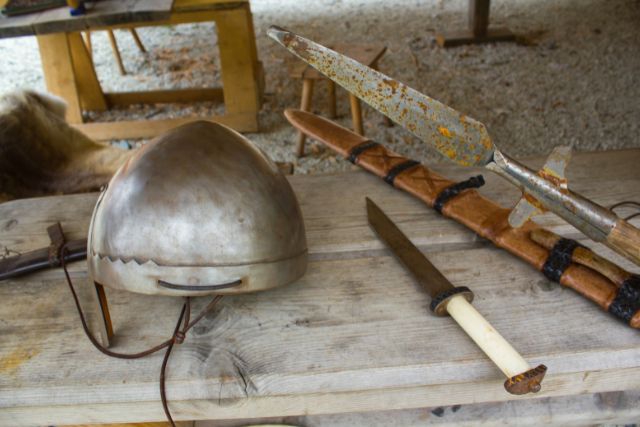
Swords and Axes
Swords and axes were the most common weapons carried by Viking warriors. Viking swords were typically double-edged, with a length of up to 90 cm. Axes, on the other hand, were a versatile weapon, utilized both for combat and daily tasks.
The design of axes varied, with some having wider blades for unarmored opponents, while others were more compact.
Spears and Bows
The spear was another common weapon, often used for throwing or thrusting. Bows and arrows were used for long-range combat, but they required more skill and were less commonly used.
The types of bows varied, but the most common design was a self-bow made from a single piece of wood.
Seaxes and Knives
Seaxes, or knives, were a typical accessory for a Viking warrior. These were smaller, single-edged weapons used for close combat or daily tasks such as eating or cutting materials. Seaxes could be kept in a sheath and hung from the belt for easy access.
Belts and Scabbards
Belts were an essential part of a Viking warrior’s attire, used for carrying weapons and other tools. A scabbard, typically made of leather or wood, was used to hold the warrior’s sword and was attached to the belt.
These accessories were not just practical, but they also often featured intricate designs, indicating the warrior’s status and wealth.
Religious and Superstitious Elements of Viking Attire
Religion and superstition played a substantial role in Viking society, and this was often reflected in their attire. Many Vikings adorned their clothing and weapons with amulets, talismans, and runic inscriptions that held spiritual or superstitious significance.
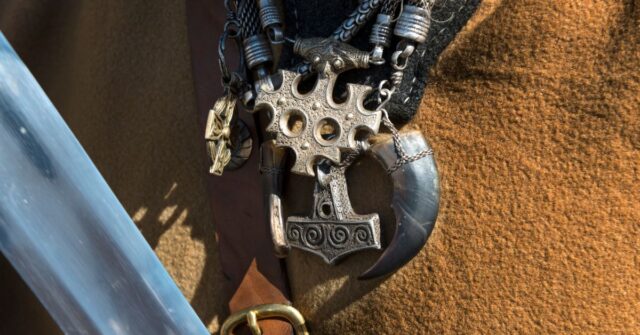
Amulets and Talismans
Viking warriors often wore amulets and talismans, typically small objects or pieces of jewelry believed to provide protection or bring good fortune.
These could take the form of animal figures, miniature weapons, or symbols from Norse mythology, such as Thor’s hammer, Mjölnir.
Runic Inscriptions
Runic inscriptions were also common in Viking attire. The Vikings used a system of writing known as runes, and these characters were often inscribed on weapons and jewelry.
Some inscriptions might tell the owner’s name, while others could be spells or charms intended to enhance the item’s performance or protect the wearer.
Viking Warrior Attire in Different Climates
The Vikings traveled far and wide, from the cold Northern regions to the warmer Southern territories. This variation in climate affected the attire of the Viking warriors, requiring different materials and designs to cope with the diverse conditions.
Viking Attire in Cold Climates
In the cold Scandinavian climate and other Northern regions, warmth was crucial. Here, clothing was made from insulating materials such as wool and animal skins.
Outerwear like cloaks and coats were lined with fur. Layering was also a common practice, helping to retain body heat.
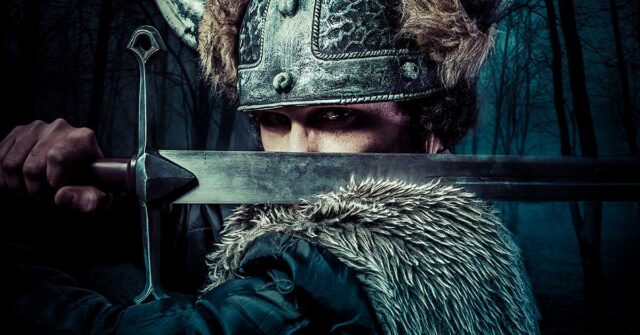
Viking Attire in Warmer Climates
When traveling to warmer climates, Viking warriors adapted their attire for comfort and heat regulation. Lighter fabrics like linen were used for clothing, and the layering was reduced.
Armor could be adjusted to balance protection with the need to avoid overheating.
Variations in Viking Attire by Rank and Status
Like many cultures, the attire of Vikings varied by rank and status. The wealthiest and most influential warriors had access to higher quality materials and more ornate decorations, often demonstrating their status through their clothing and weaponry.
The Attire of High-Ranking Warriors
High-ranking warriors or chieftains would have had the means to afford the best attire. They often wore clothing made from superior materials such as fine wool, linen, or even silk.
Their armor could include well-crafted chainmail, and their weapons would typically be of the best quality, often decorated with intricate patterns, precious metals, or runic inscriptions.
Jewelry such as brooches, rings, and necklaces made from silver or gold could be used to fasten cloaks or worn as status symbols.
The Attire of Average Warriors
The average warrior’s attire would have been more functional and less decorative. Wool and leather would be the primary materials for clothing and armor.
Their weapons, while sturdy and practical, would lack the ornate decoration seen in the weapons of wealthier warriors. Any jewelry would likely be of simpler design and made from less precious materials.
The Evolution of Viking Attire Over Time
Like any aspect of culture, Viking attire evolved over time. Changes in technology, trade connections, societal norms, and fashion trends all contributed to shifts in Viking clothing and armory throughout the Viking Age.

Early Viking Age Attire
In the early Viking Age, attire was likely more functional and less varied, reflecting the needs of a society primarily focused on survival and expansion.
Clothing and armor were made from locally available materials, and designs were simple and practical. Warriors would have had basic protective gear, including simple iron helmets, wooden shields, and perhaps leather armor.
Late Viking Age Attire
By the late Viking Age, changes in Viking society and increased trade with other cultures introduced new materials and designs. Clothing could include imported fabrics or dyes, and armor and weaponry showcased more advanced metalworking techniques.
Status-based variations in attire became more prominent, reflecting the increased societal stratification.
Conclusion: The Impact of Viking Attire on Modern Perception
Through their unique and functional attire, Viking warriors have carved a distinctive image in the annals of history. Understanding their attire is a window into their lifestyle, beliefs, and societal structures.
Though our perception is often influenced by modern media and mythology, a deeper look into Viking warrior attire reveals a complex interplay of function, status, religion, and even fashion.
As we peel back the layers, we are reminded that these formidable warriors were not only conquerors but also skilled craftsmen, traders, and explorers.

